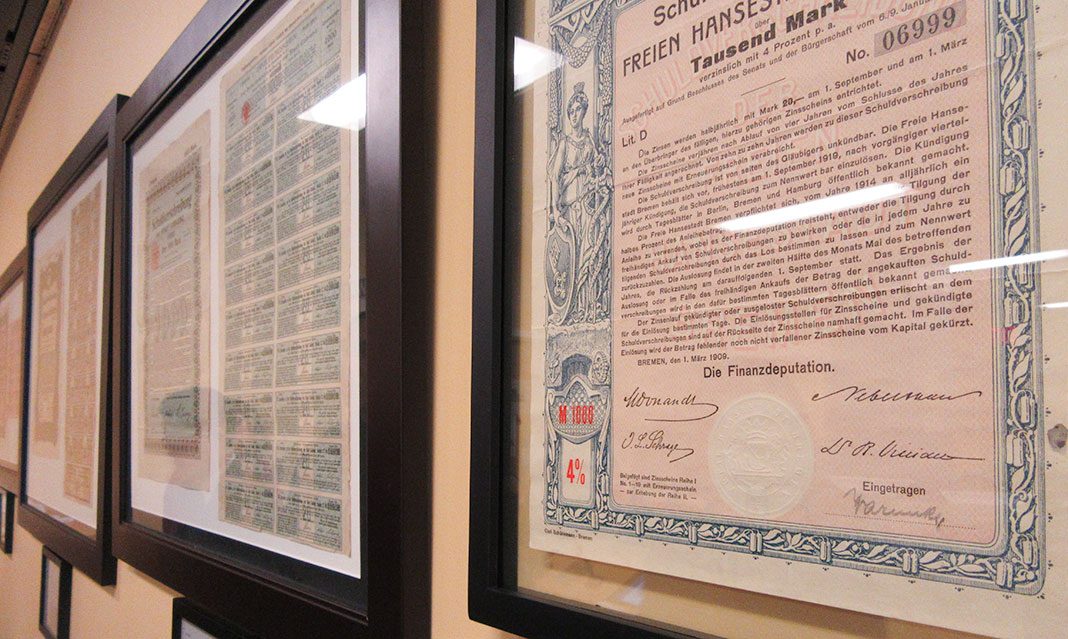Today, finance is digitized—however, over a century ago, it was drastically different. Last Thursday, professor Louis Florence from UTM’s Department of Management unveiled a collection of German bonds purchased by his grandfather.
“My grandfather came to North America, specifically to Kingston, Ontario, in the 1900s. He eventually became an investor in stocks and bonds,” said Florence.
The definite date of purchase is unknown. The bonds are said to be purchased during the time of WWI, between 1901 and 1921.
“During the First World War, Germany borrowed money to finance the war. Of course Germany didn’t win the war. Allies demanded reparations from the German government after the First World War. This was the Weimar Republic, and the government responded by printing marks and inflating the value of the currency,” said Florence.
The marks, the official German currency, were inflated to a rate where five marks were equivalent to one U.S. dollar. However, the amount of marks to an ounce of gold eventually led to hyperinflation.
After the hyperinflation that occurred in the 1920s, the German bonds were rendered of no value in numbers.
According to Florence, the bonds remained intact, as none of the coupons were clipped after 1921, but also retained value as historical artifacts from the time period.
Florence hopes that the bonds will provide some educational value to UTM students, as they will get a glimpse of the history of fixed-income instruments.
Andreas Park, of the finance faculty in the Department of Management, helped with the translation of the German text to English.
“We have an opportunity to see financial instruments in their original pre-digital analog format, helping students to supplement their own study in finance and business that goes on every day,” said Helen Kula, the Finance Learning Centre librarian at UTM.
The German bonds are now a permanent display at the FLC.



